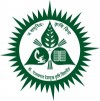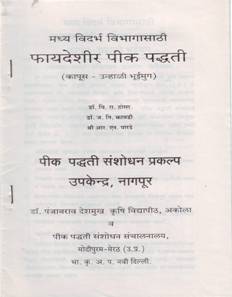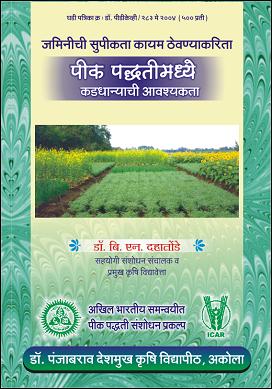|
|
|
|
|
|
|
|
|
|
|
|
|
|
|
|
|
|
|
Scientists |
|
|
|
|
|
|
||
|
|
|
About Project
All India Co-ordinated Research Project on Cropping Systems Research had its beginning at Akola (Maharashtra) in 1953 as “Soil Fertility and Fertilizer Use Project”. Later on renamed as “Model Agronomic Experiment Centre” from 1968 with full-fledged co-ordinated project. However, the programme was under the Deptt. of Agriculture Maharashtra state then the project was transferred Dr.PDKV, Akola from 20.10.1969 on its formation. It was further up-graded in 1983 to AICRP on Cropping Systems Research with a Project Directorate (ICAR) at Modipuram, Meerut.
During XI Plan PDCSR, Modipuram has again renamed this Project in march, 2009 as Project Directorate for Farming Systems Research (PDFSR) to undertake remodeled programme under Integrated Farming Systems Research mode operating through All India Co-ordinated Research for Farming Systems with 37 ‘on-station’ (25 main + 12 sub centers) and 32 ‘on-farm’ research centers in five ecosystems, i.e., arid, semi-arid, sub-humid, humid and coastal throughout the country to develop location specific system based technologies.
| On-Station Research Centres | ||
| 1 |
Arid ecosystem
|
Hisar, S.K. Nagar, Siruguppa |
| 2 | Semi-arid ecosystem | Ludhiana, Bichpuri, Kanpur, Durgapura, Banswara, Indore, Junagadh, Akola, Rahuri, Rudrur, Parbhani, Rajendranagar, Kathalagere, Coimbatore |
| 3 | Sub-humid ecosystem | Faizabad, Varanasi, Pantnagar, Sehore, Jabalpur, Rewa, Raipur, Ranchi, Chiplima, Bhubaneswar, Sabour |
| 4 | Humid/per-humid ecosystem | R.S. Pura, Palampur, Kalyani, Jorhat |
| 5 | Coastal ecosystem | Thanjavur, Maruteru, Navsari, Karmana, Karjat |
ICAR Institutes based centres
- ICAR Research Complex Goa,
- ICAR Research Complex Patna,
- ICAR Research Complex Umiam,
- ICAR Research Complex Port Blair,
- PDCSR Modipuram, Meerut
On-Farm Research Centres
| 1 | Arid ecosystem | Jagudan (Gujrat), Mandor (Rajasthan), Faridkot (Punjab) |
| 2 | Semi-arid ecosystem | Nandyal (A.P.), Guntur (A.P.), Vadodara (Gujrat), Mandya (Karnataka), Bheemrayangudi (Karnataka), Nagpur (Maharastra), Udaipur (Rajasthan), Jhansi (U.P.), Karnal (Haryana), Ambajogai (Maharastra), Igatpuri (Maharastra), Vridhachalam (T.N.), Tirunelveli (T.N.), Haridwar(Uttranchal ), Sultanpur (U.P.) |
| 3 | Sub-humid ecosystem | Samastipur (Bihar), Morena (M.P.), Chhindwara (M.P.), Kalahandi (Orissa), Faizabad (U.P.), Ranchi (Bihar), Sirmaur (H.P.), Rajouri (J & K), Ambikapur (M.P.), Lohardaga (Jharkhand) |
| 4 | Humid/per-humid ecosystem | Kahikuchi (Assam) |
| 5 | Coastal ecosystem |
Thanjavur, Maruteru, Navsari, Karmana, Karjat |
Agro Climatic Information
Vidarbha Region of Maharashtra
Vidarbha region of Maharashtra falls under A.E.Z. 6,10 and 12 with Akola, Buldana, Amravati, Yavatmal districts in A.E.Z. 6.3, Nagpur, Wardha in 10.2, Bhandara, Gondia in 10.4 and Chandrapur, Gadchiroli in 12.1. Vidarbha zone is located at a longitude of between, 75o57’ to 80o59’ E and latitude of between, 17o57’ to 21o46’ N. Akola district is located at longitude 77o02’ E and latitude 20o42’ N and at a altitude 312.7 m above MSL. Climate of the region is semi-arid to sub-humid with rainfall ranging from 700 mm in Western districts to more than 1250 mm in Eastern districts. Rains are received from June to September due to south-west monsoon. July and August are wet months. The rainy days range is 47 to 65. Few showers are also received in October. High temperatures are expected during summer with maximum temperature of 45o C in May while November to February is cold span with minimum temperature touching to 10o C in Dec./January. The region is divided into three Agroclimatic zones viz;
I. Western Vidarbha Zone( Assured rainfall zone ): Rainfall 700 – 950 mm (Washim, Akola, Buldana and Amravati districts.)
II. Central Vidarbha Zone(Medium to heavy rainfall zone): Rainfall 950 – 1250 mm (Wardha, Nagpur, Yavatmal and part of Chandrapur district.)
III. Eastern Vidarbha Zone(High rainfall zone ) :Rainfall 1250 – 1700 mm (Bhandara, Gondia, Gadchiroli, part of Chandrapur district and Umred & Bhiwapur tahsils of Nagpur district.)
Infrastructure
The total area under this scheme is 3 ha at main centre, Akola with Irrigation potential of a tube well available in field.
Mandate
-
To develop profitable and energy efficient cropping systems with special emphasis on oilseeds, pulses and fodder crops
-
To develop integrated nutrient management supply and management systems with emphasis on locally available resources
-
To improve fertilizer use efficiency in cropping systems through the use of efficient carriers, amendments and residual effects.
Research Activities / Achievements/ Recommendations
Important technologies generated as a result of on station experiments and experiments on cultivator’s field have been summarized as below (1984-85 to 2008-09)
Main centre Akola – On Station Research
- Earlier recommended crop sequences i.e. sorghum-wheat-green gram was the best in respect of grain productivity and monetary returns on medium black soil under irrigation and adequate input conditions. Alternatively any one of the following sequences should be adopted for higher monetary returns (1985-86 to 1988-89).
- Sorghum-mustard-groundnut,
- Groundnut-wheat-maize (F) and
- Sorghum- safflower-cowpea (F)
- It is recommended that 30 kg P2O5/ha to both the crops should be supplied through Ammonium Polyphosphate in to sorghum-wheat crop sequence under irrigation for higher productivity (1985-86 to 1988-89).
- Cotton-summer groundnut crop sequence has been recommended for getting higher monetary returns under irrigated and adequate input conditions (1989-90 to 1991-92).
- Amongst the several cropping systems tried, chilli (green)-groundnut is recommended under irrigated condition (1992-93 to 1994-95).
- Application of NPK 50% higher than the recommended dose along with, 15 tons FYM/ha to sorghum and recommended plant population should be maintained for maximum yield under continuous cropping of Sorghum-Wheat (1992-93 to 1995-96).
- Under situation of irrigation water availability up to the month of March, sorghum-wheat and sorghum-chickpea crop sequences are recommended. In addition, soybean-wheat and sorghum-sunflower crop sequences are also recommended (1994-95 to 1996-97).
- For sustainable productivity of cotton-summer groundnut cropping system, application of recommended dose of phosphorus was advisable to summer groundnut only. (1190-91 to 1994-95)
- Considering monetary return, B:C ratio, productivity and sustainability it is recommended to grow sorghum – chickpea in the first year and maize- wheat or soybean – wheat or soybean – sunflower in the second year with recommended package of practices (199798 to 2002-03).
- For more productivity, monetary benefit and economy in water use and improvement in soil fertility the sorghum-chickpea or soybean-chickpea sequences should adopted with recommended irrigations (2002-03 to 2004-05).
- Considering productivity, monetary return, water use economy and improvement in soil fertility it is recommended to adopt soybean-rabi sorghum sequence with two to three irrigations at primordia initiation (30-35 DAS), flowering (70-75 DAS) and/or grain filling (85-95 DAS) stages to sorghum (2002-03 to 2004-05).
- In maize – chickpea cropping system it is recommended to apply 3/4th recommended NPK through fertilizer, 1/4th recommended N through leucaena lopping (46.15 q/ha) + azotobacter application to maize and ½ recommended N, P dose to succeeding chickpea for higher productivity, monetary return and soil fertility build up (2003-04 to 2005-06).
- In sorghum-chickpea crop sequence, application of FYM 5 t/ha coupled with 75% RDF (60:30:30 NPK kg /ha) and seed treatment with Azotobacter and PSB (each 250 g/ 10 kg of seed) to sorghum and 75% RDF (19:38:00 NPK kg /ha) with Rhizobium and PSB seed treatment (each 250 g/ 10 kg of seed) to chickpea is recommended for obtaining higher monetary returns, sustainable yield and soil fertility buildup under protective irrigations. (2008-09)
Sub- Centre, ECF – On Farm Research (Central Vidarbha Zone)
-
Under irrigated conditions, groundnut-wheat and hybrid sorghum- wheat crop sequences should be followed for higher gross monetary returns. (Nagpur, 1984-85 to 1986-87)
-
For maximum gross monetary returns, rice (Sakoli-6) in kharif and wheat (NI-5439) on residual moisture in rabi should be taken with recommended fertilizer dose in rice-wheat crop sequence as against the traditional monoculture practice of growing long duration variety of rice alone. (Nagpur, 1984-85 to 1986-87).
-
Green gram (TAP-7)-safflower (Bhima) crop sequence under improved practices with recommended fertilizer dose of 20:40:0 kg NPK/ha to green gram and 25:25:0 kg NPK/ha to safflower should be adopted under rainfed condition for higher yields than the farmers’ practice. (Yavatmal, 1993-94 to 1995-96)
-
Under rainfed condition, broad bed furrow (BBF) technology for groundnut in kharif and chickpea in rabi should be adopted for increasing the productivity in groundnut-chickpea crop sequence. (Yavatmal, 1993-94 to 1995-96)
Western Vidarbha zone, (WVZ)
-
Under limited irrigation availability up to the month of February, Maize-sunflower or sorghum-sunflower cropping systems be followed for higher monetary returns (Buldhana, 1997-98 to 1998-99).
-
In Sorghum-Wheat crop sequence 50% recommended dose of N should be applied through leucaena loppings (5t/ha) or FYM (10t/ha) + 50% NPK through inorganic fertilizer to sorghum and recommended dose through inorganic fertilizer to wheat for higher productivity, monetary return and nitrogen economy. This confirms the earlier recommendation of on station experiments (Buldhana, 1997-98 to 1998-99)
Transfer of Technologies
Double cropping (Kharif – Rabi)
Profitable Crop sequence under rainfed as well as limited irrigation.
(Soybean – Chickpea / Rabi Sorghum)
 |
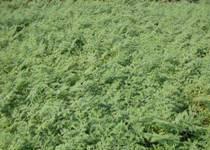 |
 |
In Vidarbha region due to erratic behavior of rainfall availability of water is not adequate to sustain the crop. As a result irrigated cropping system in this region is neglected. The reason behind this mainly water shortage in the profile and non availability of sufficient irrigation water for the rabi crops. Therefore, it is felt necessary to design efficient cropping system so as to cater the needs and sustain under limited water condition at the same time soil fertility is one of the important aspects which needs the proper attention.
Soybean is emerging as a major Kharif crop and what will be the profitable option after harvest of soybean. Therefore, Soybean – Chickpea/Rabi Sorghum cropping system is the best option under available moisture or under limited irrigation for the region.
Considering productivity, monetary return, water use economy and improvement in soil fertility it is recommended to adopt Soybean – Chickpea and Soybean-rabi Sorghum sequence with two to three irrigations at primordia initiation (30-35 DAS), flowering (70-75 DAS) and / or grain filling (85-95 DAS) stages to sorghum.
Merits of Soybean – Chickpea / Rabi Sorghum cropping system
- Low cost management crop sequence
- Higher Productivity under rainfed condition.
- Higher net monetary returns.
- Maintain fertility of the soil by adding dry mater (Leaves).
- Create crop cover on surface of land and result in reduction of runoff and soil loss.
- Rabi sorghum
- Production of quality grains because of escape from grain mold.
- Meet food and fodder requirements.
Integrated Nutrient Management for sustainable soil health
INM in Sorghum-Wheat crop sequence
 |
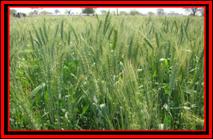 |
 |
Progressive soil fertility depression will assume serious limitation in future for sustainable agriculture. Not only a part of the plant nutrient need can be met by organic manure, crop residue, green manuring and biofertilizers, but in many cases they may act synergistically with mineral fertilizers.
INM system is the key to get the best out of the both and assure sustained crop production. Considering the above facts study has been taken and given fallowing recommendations.
The long term experiment on integrated nutrient supply system is continue since 1984-85 at CSR, Unit. The object of the experiment is to develop suitable integrated nutrient supply system for cereal based crop sequence involving more efficient use of fertilizers in conjunction with a combination of organic manures for improving crop productivity without deteriorating the long-term soil fertility.
The results revealed that in permanent plot experiment on integrated nutrient supply system in sorghum-wheat cropping system recommended dose of NPK fertilizer could be reduced by 50% to kharif sorghum and substituting 50% N through FYM (10 t /ha) or leucaena loppings ( 9 t /ha) and in rabi 100 % recommended dose to wheat for sustainable and high yield of both the crops with remarkable improvement in soil fertility status.
Merits of INM in crop sequence.
- Reduce the quantity of chemical fertilizers ( up to 50%).
- Higher total productivity
- Improving quality of produce.
- Restoring fertility and productivity of the land that has been degraded
- Correction in inherent soil nutrient deficiencies.
- Environmental safety.
Crop rotation for sustainable soil health
Multiple cropping (Cereal – legume – oilseed)
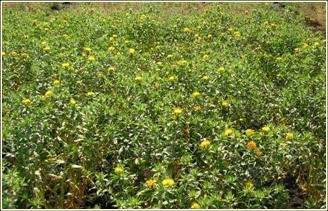 |
 |
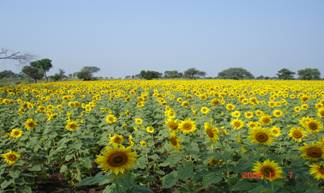 |
In Vidarbha region 80-90% area is under kharif crops and on remaining area both kharif and rabi crops are cultivated and very few area is under summer crops cultivation. But looking towards the increasing population day by day and to fulfill the food requirement of the increasing population and fodder requirement for animals. It is necessary to cultivate more than one crop in a year.
The doubled cropping can be possible in rainfed condition of Vidarbha region by adopting appropriate agronomic techniques of moisture conservation. Now a days it is essential to take multiple cropping where there is a perennial source of irrigation.
For maintaining soil fertility and control the life cycle of pest, disease and weed. Crop rotation is essential
Considering the above requirement the experiment was conducted (1997 – 2003) with an objective to study the effect of rotation of crop sequences and changing proportions of cereals, legumes and oilseeds on crop productivity and soil fertility.
The results revealed that, considering the monetary returns, benefit cost ratio, comparable total grain productivity and maintenance of soil fertility, a two years crop rotation of sorghum –chickpea, in the first year and maize – wheat or soybean – wheat or soybean – sunflower in the second year should be grown with recommended package of practices.
Merits of Crop rotation.
- Diversification of crops helps in reducing financial loss due to unfavorable weather conditions.
- Overall increase in the yield due to addition of organic matter ultimately improve soil health.
- Incidence of pest, disease and weeds are reduced.
- Helps to prevent soil erosion.
- Meet various needs of the farmer.
Profitable crop sequences with fertilizer and irrigation management were recommended for the farmers of this region under rainfed as well as irrigated condition
Publications
|
|
|
|
|
|
|
|
|
|
|
|
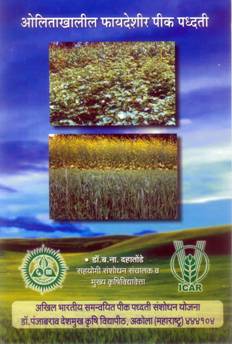 |
 |
Contact Information
Chief Agronomist
All India Co-ordinated Research Project on
Integrated Farming Systems Research,
Dr. Panjabrao Deshmukh Krishi Vidyapeeth
Akola -444104 (Maharashtra)
Phone : (91) – (0724) 2258200 – 2258217 (1058) PBX
E-mail- cacsr@pdkv.ac.in
